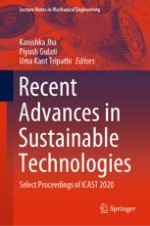2021 | OriginalPaper | Buchkapitel
Aerodynamic Analysis of Body of Passenger Bus for CO2 Reduction and Fuel Saving
verfasst von : Dawit Tafesse, Ramesh Babu Nallamothu, Anantha Kamal Nallamothu, Seshu Kishan Nallamothu, Lelisa Gezu, Bekele Eromo
Erschienen in: Recent Advances in Sustainable Technologies
Verlag: Springer Singapore
Aktivieren Sie unsere intelligente Suche, um passende Fachinhalte oder Patente zu finden.
Wählen Sie Textabschnitte aus um mit Künstlicher Intelligenz passenden Patente zu finden. powered by
Markieren Sie Textabschnitte, um KI-gestützt weitere passende Inhalte zu finden. powered by
